|
Kids love to get creative and build structures. I can remember many times watching them build houses with yards and garden plots or playground structures. As they became aware of their surroundings, more of the features appeared in their designs. Building a community requires the same type of awareness. In order to build a community, it is important to take note of what needs to be included. Let's take a look at how communities differ or are the same and what key elements are found in each type of community. There are 3 main types of communities that kids should be introduced to: urban, suburban, and rural communities. Most children live in one of these types of communities, or perhaps they've moved from one type of community to another type of community. Each of these types of communities has characteristics that cause them to be identified as a specific kind of community. They have many of the same types of essential services, but they have different points of interests, kinds of buildings, locations, and other features. When looking at the various types of communities, get kids to look for the following kinds of services and points of interest: Schools, daycares, homes, parks and playgrounds, libraries, hospitals or clinics, fire stations, police stations, post offices, grocery stores, specialty shops, restaurants, cafes, banks, places of worship, types of public transportation, community centers, and unique landmarks. The more densely populated the area is, the more of these essential services there will be in the area. For less densely populated areas, the services will be fewer and they will be more spread out. Take your students on some neighborhood walks and check out what different services, and features are found in the nearby area. Use this information to help determine what type of community they live in. To find out more about the different types of communities, check out these resources. What Is A Community? Types of Communities Designing A 3D CommunityDesigning a 3D community can be an exciting and engaging project for kids. Here are some tips to help them get started and create a vibrant and imaginative community model. Begin by deciding what type of community to build. Think about things like: What buildings or landmarks should be included? What features make our community special? Look at pictures, maps, and books to gather ideas and information. Have them imagine that they are developers or city planners. When deciding on what services will be there and where they would be located, what would a developer or city planner have to consider? Ask questions like: Would it be a good idea to put the airport in the middle of town? What should go near a school or a hospital? Why? What kind of transportation will there be and how will it be set up? There are many other questions and discussions about what is needed and where it should be located. Make note of the different ideas and when it comes to making decisions choose the ones that the students feel fit with the community they want to create. Note: They may need guidance with making these decisions. Time To Build The CommunityOnce decisions have been made, it is time to begin the process of creating the community. Note: It is important to consider the space needed for your 3D community. This will determine the scale and amount of structures, etc. that can be included. Create a sketch together before starting to build. (I usually did this on the whiteboard.) This helps them visualize the layout and design of their community. if it's a class project, assigning different jobs to small groups or individuals as you proceed will help with making the project manageable. Assign roles to different children based on their interests and strengths. Some children may enjoy building structures, while others may prefer decorating or landscaping. Once the plan is drawn and the buildings, services, landmarks and other features are decided on, it is time to build. Scale and proportion are very important and should be discussed to help them understand how to create buildings and features that are proportional to each other. For example, a small milk carton could be the size of a house. This would be the scale guide for all other buildings and objects. Don't forget to include natural elements such as parks, trees, and rivers in the 3D model. These features add depth and realism to the community. Features like street signs, traffic lights, benches, and street lamps can also make the model more realistic. Share And CelebrateOnce the 3D community is complete, display it prominently in the classroom or school for others to see. Consider organizing a presentation where children can share their creation and explain the thought process behind their design choices. I did this type of project several times with my classes and I was always very impressed with what they learned and how excited they were to share this will others. If you want to find out more, check the posts below. This is the resource that I used to create our 3D communities. Creating A Community Good luck with your students as you embark on creating a community together. Related PostsIf you mention to your students that you are going on a treasure hunt, you can be sure there will be cheering and excitement along with lots of questions. Learning to read maps and use them are valuable skills for kids, and one way of capturing their attention is to link them to stories of treasures and adventure. Ways To Use MapsMapping skills can be exciting for kids if they are introduced in an interesting, hands on way. These skills help develop spatial awareness and teach kids how to navigate in their world. Here are some different ways to get started. 1. Look at a variety of different types of maps and try to find some similarities on them. Look for symbols, shapes, words, or other elements that may be important. Treasure maps, school maps, neighborhood maps, and even country or world maps are great examples. 2. Try following a neighborhood or school map and identifying the various areas or symbols that are on the map. 3. Walk around the neighborhood and make note of different things that are there. Draw a map that shows the different key elements and create a legend that can be followed by others. 4. Create a treasure map and a story to go along with it. Maybe even try to find a hidden treasure in the nearby area following a map. 5. Check out mapping programs like Google Earth and see the bigger world by exploring the neighborhood and beyond. Important Mapping Skills And TermsLooking at a variety of different maps and exploring the world around them is great, but in order to really understand how to read and use maps requires teaching about the different concepts and details. Young children need to be taught some of the vocabulary and also how to use the different symbols and components of maps effectively if they are going to be able to transfer these skills to various different types of maps. Here are some of the terms and aspects of maps that children need to understand and practice using to fully understand how to read maps. Map - A paper drawing or an electronic image that show where different places are located. There are many different kinds of maps. World maps, neighborhood maps, road maps, and treasure maps are just a few types. Legend/Key - This is a guide for the symbols used and tell us what they represent. Symbols - These are pictures or shapes that are used to represent real objects or places. Compass Rose - This is a symbol that is used to show the directions north, south, east, and west, as well as areas in between. It helps to make sure that we are going in the correction direction when following instructions for how to get somewhere. Grid - This is used to help locate areas on the map. The spaces where the letters and numbers interesect show where the object or place is located. Coordinates - These are the numbers and letters on the map that are used for locating the correct spaces on the grid. Scale - This shows the distance between places or objects. It can also be used for 3D maps to make sure that objects are appropriate sizes. Here are some booklets that help to explain and practice using these terms. Map Skills Mapping Skills Using Grids Once they understand what the various components are, they can begin to create their own maps. Here is a free booklet I created that can help them get started on creating a neighborhood map. More Mapping ActivitiesLooking for some more ideas and hands on activities? Check these out. 1. Create a treasure hunt: Provide children with blank paper and crayons/markers. Encourage them to draw their own treasure maps, including landmarks like trees, houses, and lakes. They can then hide "treasure" (e.g., small toys or stickers) and exchange maps with classmates for a fun treasure hunt. 2. Collaborative Classroom Map: Create a map of the classroom. Use a large piece of paper or a whiteboard and let students contribute by drawing key features such as desks, chairs, door, windows, and other important items. Discuss the purpose of each item and its location within the classroom. 3. Following Directions Game: Play a game where children practice following directional instructions in the school yard. Give verbal instructions like "walk two steps north" or "turn to the left and walk three steps west." This helps reinforce cardinal directions in a fun way. 4. Outdoor Scaventer Hunt: Take children on an outdoor scavenger hunt around the schoolyard or nearby park. Provide each child with a simple map indicating areas they need to explore and items they need to find (e.g., a tree, a bench, a flower). Encourage them to mark off each item as they find it and label the map where the item was found. As you can see, there are many components to learning how to use maps and understand them. Once kids get the hang of it. they can navigate to different places and create adventures that are fun and educational as well. Enjoy sharing these spatial adventures with your students and helping provide them with tools for future adventures. Next time I will share more ideas about mapping and how to create a 3D community. Related PostsThere are many different ways to approach teaching a child about their world, but developmentally, it makes sense to start with their little circle and move out from there. When kids are young, they are looking at the world through the lens of ME - what I like, what I want, what I have, etc. This is the time to focus on helping them to know what is going on around them with family, friends, neighbors, and themselves. Here are some fun activities that help them with learning about these things. All About Me ActivitiesThese activities help kids to focus on their unique identity, interests, and experiences. They encourage them to explore and share information about themselves, including their name, family, hobbies, and favorite things. 1. Name Identity And Recognition - Create personalized name tags using their names and decorative materials like stickers, markers, or colorful paper. - Play name games that involve saying and spelling names 2, Family And Home - Create a family tree collage using photos or drawings of family members. Discuss family roles and relationships. - Draw pictures of their homes, including details like the color, number of windows, and any special features. 3. Hobbies - Create personalized "All About Me" books where they can write or draw about their favorite things, hobbies, and interests. 4. Favorite Things Or Preferences- Create a class chart or graph where they can share their favorite foods, colors, animals, etc. Discuss similarities and differences among classmates. 5. Celebrating Similarities And Differences - Provide magazines, newspapers, and art supplies for them to create collages showcasing diversity in appearance, interests, and abilities. Some Family Resources To Go FurtherLearning more about family backgrounds and cultures is an area that can be pursued when the children have an understanding of what makes them special or unique. Here are two resources that can help to develop these ideas more. Heritage Project Discovering Our Roots and Flat Family Project. Neighborhoods And CommunitiesDepending on where children live, their neighborhood and surrounding communities can be very different from other neighborhoods and communities. It's important to be able to recognize different types of communities and also identify which community is most like theirs. The three main types of communities most people are familiar with are urban, suburban, and rural. Here is a booklet that helps to explain some of the features that distinguish the different kinds of communities. Once children are familiar with the different types of communities, they will be able to look around the area where they live and start to identify different characteristics that will determine which kind of community they live in. Neighborhood And Community Activities1. Start with neighborhood walks. Ask questions that can help to determine noticeable characteristics. What kind of businesses and industries are there? What kind of housing is most common? Are there any landmarks? How much traffic is there? and so on. 2. Take note of some of the community helpers in the area. Who do they see regularly in their neighborhood? What type of community service do they provide? Learn more about their neighbors and community helpers. Perhaps bring in some community members to share what they do. 3. Learn more about the different businesses, services and landmarks or points of interest in their community. How many schools are there? Is there a library? How close is the hospital? What different services are there? Consider taking field trips to the various places such as the fire hall, police station, library, or grocery store to learn first hand how the different members of these places help the community. Provinces, States, And TerritoriesProvinces, states, and territories are larger areas of land that make up countries. Although they are considered as individual sections, they have a variety of different communities and characteristics, not just across the country, but also within each province, state, or territory. There are many different kinds of activities that can be done based on the areas being studied. Here are a few ideas. 1. Check out how the various areas are similar or different when it comes to climate zones and weather. Keep track of weather patterns by following the weather reports for the region and the country. How are they the same or different? Note: The wide range of climate changes across the larger regions and country may be surprising since children often expect the weather to be the same all around them. 2. Do activities that explore the geography of the country. What are the major cities, landmarks, types of landforms, etc. How do these things impact living in these areas? 3. Choose a couple of areas that are different from each other and research them. Here are some types of questions to ask: How do they vary in services and industries provided? What is the climate like there? What kinds of activities and landmarks are they know for? How is living the same or different? Some Projects To TryOver the years areas change. It's important for children to understand that life now is very different from what it was like many years ago. Here is a research project that can help them to understand how their community has changed in the past 100 or so years. When studying about different provinces, states, or territories, doing research is a great way for children to get a better understanding of where they live. Here is a research project the focuses on learning about the industries and services of a province, state, or territory. It has different ways to share what has been learned so that children can choose the format that best helps them to share their knowledge. The WorldContinue to help kids expand their knowledge of how big our world is. The world encompasses countries, oceans, and continents. Do activities that help them to see the vastness of where we live. Here are some ideas. 1. Look at globes and maps and see where the different countries are located. 2. Build puzzles and talk about the different continents and the countries that make them up. 3. Do activities that involve labeling the oceans and continents. 4. Choose some countries and do research activities on them with small groups. Have the groups share their findings with the rest of the class. This way several different countries can be explored and it will enrich the knowledge and understanding of cultures and diversity in the world. Enjoy sharing these activities with your students. Next time I will share ideas about teaching mapping and creating communities. Related PostsLearning about the world we live in is a fascinating thing for young children. There are so many different facets of the communities, countries, and areas of the world to discover. Kids are intrigued with maps, field trips, and stories about the world around them. One way to capture their enthusiasm and engage them in learning more about the world around them is to start at an individual level and expand globally from there. There are several reasons for this approach, but from a developmental perspective it just makes sense. Kids focus on themselves and what is going on around them when they are young. Therefore, learning more about their immediate circle and the area around them first is a good choice. Beginning with the individual allows them to connect their learning to their own lives and experiences. Begin with family, friends and neighborhoods and expand out from there. Here are some ideas for expanding from the individual to the global concepts. All About MeStart with the individual, focusing on each student's unique identity, interests, and experiences. Encourage children to explore and share information about themselves, including their name, family, hobbies, and favorite things. Consider activities such as All About Me posters, family trees, Interest profiles, and writing activities about a special hobby , activity, or interest. My NeighborhoodExpand your students' understanding to their immediate surroundings by exploring their neighborhood. Engage them in activities such as neighborhood walks, where they can observe and map local landmarks, houses, parks, and businesses. Encourage them to learn about their neighbors and community helpers like firefighters and mail carriers. My CommunityBroaden the scope from the immediate neighborhood to encompass the larger community beyond there Guide your students in learning about the various institutions, services, and points of interest within their town or city. This may include schools, libraries, hospitals, government buildings, and cultural landmarks. Encourage them to explore the roles of different community members and how they contribute to the community's well-being. My Province Or StateDive deeper into regional geography by exploring the province, state, or territory where the students live. Help them learn about the geography, history, and cultural diversity of their region. They can research notable landmarks, industries, natural features, and historical events that shape the identity of their province or state. Encourage them to compare and contrast their region with others. My CountryContinue to expand your students' geographical knowledge to the national level by studying their country. Explore its geographical features, climate zones, major cities, landmarks, and cultural diversity. Discuss national symbols, traditions, government structure, and historical events that have shaped the country's identity. Encourage them to develop a sense of national pride and appreciation for their country's heritage. The WorldFinally, broaden their perspectives to the global level by learning about different countries and continents around the world. Help them explore world maps, atlases, and globes to understand Earth's continents, oceans, and major geographical features. Encourage discussions about global issues, cultures, languages, and traditions. Help them to develop an appreciation for cultural diversity and interconnectedness among nations. By following this progression from the individual to the global level, students gradually develop a deeper understanding of themselves, their immediate surroundings, and the wider world. Through hands-on activities, research, discussions, and exploration, they gain valuable knowledge and skills in geography, social studies, and cultural awareness. Next time I will share some more ideas for learning about our families, our communities, our provinces or states, and the world around us.
There's no better way to capture a child's interest and spark his imagination than to create things to demonstrate learning. This could be a model, a poster, task cards, a game, a diorama, a play, or a podcast just to name a few. When children are engaged and motivated, they tend to learn more deeply and they are more passionate about their project. There are many different types of projects that can be done based on the subject and concepts that are to be studied. Today, I would like to focus on some projects that work well with the primary social studies topics of families and communities. Community projects and researchAssigning research projects where children investigate different aspects of their community, such as its history, economy, or cultural heritage and present their findings through presentations, posters, or multimedia projects develops research skills, information literacy, and a deeper understanding of the community's development. Heritage ProjectWe often study about families and look at family trees in the early grades. I wanted to take this further, so I developed a project that studied family heritage. To find out more about it and why it was important to me, check out this post. The goal of the project was to learn more about what make us unique and special. It was a great way to research different cultural aspects of various countries and share them with others. Check out the project here. Flat Family ProjectMany people are probably familiar with Flat Stanley and the project that began with sending cutouts of Flat Stanley around the world and recording adventures with him. Then people began sending cutouts of themselves to record these adventures. I decided to take this a step further as part of our heritage studies. We created flat families and journals that we mailed to family members in different parts of the world. The families took photos of activities together and made journal entries to share. They returned these journals along with special mementos to the children. It was so exciting to watch the faces of the children when a package arrived and the contents were shared with the class. This Flat Family project has been set up for others to try. You can read more about it here. Creating A 3D Community ProjectLearning about communities and what they need is important. What better way to make sure that they understand what they have learned than to create a 3D community. This was a fun project that wowed the parents and other classes, not only because of its appearance, but also because of how much the kids could share that they had learned. Check it out here. If you would like to learn more about how we created it, check out this blog post. These are just 3 different projects that can be done. If you are interested in other projects, check out my social studies category. I hope you find doing projects as successful as I did. Related PostsWhen thinking about communities, the story of the country mouse and the town mouse often comes to mind. Where we live becomes our reality and we often don't know much about other ways of life except through stories and pictures. It is important to broaden our horizons and discover more about the world around us and the different types of communities that make up our world. As teachers, we need to teach our students about communities and how they can impact our lives. Learning about communities, their importance, differences, and development can be an engaging and meaningful experience for children. There are many different ways to help kids better understand what communities are, how they are the same or different, and why they are important. These could include field trips, community interviews, listening to guest speakers, role playing different community helper roles, participating in different community service activities, comparing different kinds of communities, creating community maps, exploring literature and listening to storytelling, participating in different cultural celebrations and creating a community project. Let's take a closer look. 1. Field TripsField trips are a great way to get a hands on experience. They can be done in a couple of different ways. 1. Arrange field trips to various community locations such as fire stations, libraries, local government offices, farms, parks, or historical sites. This gives the children the opportunity to observe, interact, and learn from community members. Encourage them to ask questions and make connections between the places they visit and the roles they play within the community. 2. Organize field trips to different types of communities within your region, such as urban areas, rural towns, or suburban neighborhoods. Visit local government buildings, parks, historical sites, or cultural centers. Encourage children to observe and compare the features, services, and characteristics of each community. 2. Community InterviewsEncourage children to interview community members, such as parents, grandparents, neighbors, local business owners, or local volunteers about their experiences and contributions to the community. They can ask questions about their roles, the services they provide, and the changes they have witnessed in the community over time. This activity promotes interaction, communication skills, and understanding of different perspectives. It allows children to learn about different perspectives, values, and the ways in which individuals shape and impact their communities. 3. Guest SpeakersInvite guest speakers from various professions or community organizations, such as local government officials, community leaders, or representatives from nonprofit organizations to talk to the children. They can share their experiences, explain their roles within the community, discuss the importance of their work, and talk about the development and unique aspects of their specific community. This firsthand interaction helps children understand the diversity of community roles and how they contribute to the well-being of society. 4. Literature And StorytellingRead books and stories that focus on communities and their development. Discuss the roles of different community members, the services they provide, and the ways in which they contribute to the well-being of the community. Encourage children to discuss the characters' experiences, values, and the significance of community in the story. Help them make connections and share their own stories or experiences related to their community. 5. Role PlayingSet up a dramatic play area where children can pretend to be community helpers or act out community-related scenarios. Provide props, costumes, and materials that represent various community roles like doctors, teachers, police officers, or shopkeepers. This hands-on experience allows children to explore different community roles and understand their responsibilities. 6. Community Service ParticipationEngage children in community service projects such as organizing a neighborhood clean-up, food drives, bottle drives, collecting donations for local charities, or planting trees in public spaces. These projects promote active involvement and an understanding of community needs. This hands-on experience helps them develop empathy, a sense of responsibility, and a deeper appreciation for their community. Children learn the importance of active citizenship and the positive impact they can have on their community. 7. Different Kinds Of CommunitiesExplore different types of communities, such as rural, suburban, and urban areas. Discuss the similarities and differences between them, including aspects like housing, transportation, amenities, and services. This helps children understand the diversity of communities and the factors that shape their development. Here are some resources that might help. 8. Community MapsHave children create maps of their own communities. They can include landmarks, places of interest, and community resources. They can identify and label places like schools, hospitals, parks, and grocery stores. Have discussions about the purpose of these places, their roles within the community, and how they contribute to the well-being of residents. Look at community maps of different places and types of communities. Compare and contrast the maps to highlight the diversity and uniqueness of each community. 9. Cultural CelebrationsCelebrate and explore cultural diversity within the community through festivals, cultural events, or international days. Invite families to share their traditions, music, dance, or cuisine with the children. This helps children recognize and appreciate the diversity within their community and promotes understanding and acceptance of different cultures. It helps them understand that communities are made up of people from various backgrounds. 10. Community ProjectEngage children in community development projects for their school, such as creating a community garden, or planning a recycling program. Allow them to brainstorm ideas, collaborate, and take action to address school community needs. This hands-on involvement fosters a sense of ownership and empowers children to contribute to the betterment of their community. Have fun with these activities and teaching your students. Related PostTravel today is very different. Technology has advanced so much that it is rare to see paper maps in the car now unless you are on The Amazing Race! I'm sure some of you remember hauling out a folded up map or a booklet of travel maps when taking a trip. You usually had to plot your trip at home so that you could find your way when driving or you needed a navigator to help you get to where you were going. Let's check out some different activities and resources that focus on mapping skills using technology. Google Earth ExplorationUsing the app Google Earth, start by checking out different places in the community. Kids love to see their homes on the screen. It can be fun to see how things have changed if the images are older and the houses have been renovated or painted. Once you have checked out areas in the community, expand the exploration to other parts of the country and the world. This is a great activity to tie in with a social studies project like my Flat Family Project where the flat families are sent around the world to other relatives. Plan A Geocaching AdventureGeocaching is popular around the world. It is really a high tech treasure hunt. Sometimes there are small trinkets to trade, but the excitement is really in finding the small cache (sometimes it is very small and called a nano). Kids love to go treasure hunting, so this is a great way to introduce them to the gps devices and how they work. Organize a mini-geocaching activity on the school grounds or in a nearby area. This will require students to follow GPS coordinates and maps to find hidden caches. I did this with my class and then we actually planted a cache for others to find. It was exciting to see the messages when people found it. Unfortunately, it isn't there anymore as someone took it away, but it was fun while it lasted. Virtual Map ExplorationUtilize interactive online mapping tools or apps that allow children to explore maps virtually. These tools can make map exploration engaging as well as interactive. They can zoom in and out, explore different regions, and locate famous landmarks. Encourage them to identify key features, read labels, and learn about different places. Online Map GamesIncorporate map-based games and quizzes to test and reinforce your students' knowledge. (You can always do some off-line games and quizzes too if you don't have enough devices available.) Virtual Field TripsTake your students on virtual field trips to different parts of the world. Websites and platforms offer immersive experiences that connect geography and culture. Local museums and other places may also have tours available that can be viewed online. Our museum had a walking tour of the different landmarks in town available. At each spot there were questions to answer. This was a great way to learn about the history as well as discover the locations of the the different landmarks. These are only a few of the different ways you can use technology with mapping skills. It might be fun to get your students to brainstorm more ways that technology is used and perhaps do a project or activity that shares these ideas with others. Related PostsAre you looking for innovative ways to introduce mapping skills to your young students? Mapping skills are an important tool for students to have as they navigate their way through the world. It's important to nurture these fundamental skills early on. Here are some creative ideas to make learning about maps engaging and fun in your classroom. Map PuzzlesPuzzles are a great tool for learning about geography and how to read maps. They can be used to study areas where kids live or other parts of the world. Starting with smaller areas and expanding to the world view follows a similar pattern to teaching about families, neighborhoods, cities, provinces, territories, or states, and then full countries when learning about communities. Map ArtworkEncourage artistic expression by having students create their own maps, whether it's their neighborhood, a fantasy land, or a treasure map. You could even create a map gallery or bulletin board with their maps. It might be fun to have them create some stories to go along with their maps. Map StoriesMap stories can be incorporated in a variety of ways to make mapping more meaningful. Here are a few ideas. 1. Create some stories that involve using a map or discovering a place by following directions. These can be based on actual events or fantasies. 2. Integrate storytelling with mapping. Read colorful storybooks that involve journeys and create simple story maps together. Ask your students to draw the story's path on their own maps. 3. Read books and stories that focus on communities and their development. Discuss the roles of different community members, the services they provide, and the ways in which they contribute to the well-being of the community. Encourage children to share their own stories or experiences related to their community. 4. Have students create maps of their favorite storybooks. This activity not only reinforces map skills but also connects literature and geography. Treasure HuntsAs soon as you mention a treasure hunt, some children are hooked. They are curious to find out about hidden treasure and to go on the hunt. This is a great time to incorporate mapping skills and adventure. Organize classroom treasure hunts where students use maps to locate hidden "treasures" within the school. This activity combines problem-solving with map reading. Create a treasure hunt activity outdoors where children follow a map to find hidden objects or clues. Provide a simple map with landmarks and directional instructions, and let them navigate their way to the treasure. This activity promotes map reading, following directions, and spatial awareness. Map Symbols And LegendsSome important mapping skills for young children to learn include being able to interpret symbols and legends as well as use scale and a compass rose. Activities should be created to help with developing these skills. Here are some suggestions: 1. Provide them with simple maps and legends and practice reading them together. They should learn to recognize and locate landmarks, such as buildings, parks, or bodies of water, on maps. This helps them build a mental map of their environment and develop a sense of place. They can also practice creating simple maps of their classroom, neighborhood, or a familiar route using symbols and adding in a legend. 2. Understanding the concept of scale on maps, where distances are represented proportionally is another important skill for them to learn. They need to learn to estimate distances and understand that maps are a condensed representation of a larger area. Doing activities that help them to visualize how scale works helps. For example: if they want to walk down to the corner, it is very different from walking several blocks to the store. They need to understand that on a map you can't really draw the distances as they really are and that small distances need to be very close together and longer distances need to be much further apart on the map to represent the distances in real life. Try using a tiled floor to show how this could work. The distance of one tile could be one block. If something was down at the corner, it could be one tile away. If something was 6 blocks away, it could be 6 tiles away. This could then be transferred to graph paper so that each square represents a block. Using graph paper instead of tiles helps them to see that to represent larger distances the scale needs to be smaller. 3. Following directions can be difficult at first. Learning about the compass rose and cardinal directions (north, south, east, west) and basic navigational concepts like left, right, up, and down is an important skill. Do plenty of games and activities to practice giving and following directions using maps or verbal instructions. For example, you can play "Simon Says" using directional cues like "Simon says take two steps forward" or "Simon says turn to the left." This activity reinforces cardinal directions and helps them practice spatial orientation. Map Reading Challenges: Provide children with different maps and ask them to locate specific landmarks, calculate distances, or plan routes between two points. You can also create map-based riddles or puzzles for them to solve. This activity enhances their map-reading skills, critical thinking, and problem-solving abilities. Community MapsThere are many different ways to create community maps and each of them can serve different purposes. Here are a few suggestions and how they can be used to enhance student learning. 1. Encourage students to create community maps that depict different features, landmarks, and institutions in their local area. They can identify and label places like schools, hospitals, parks, and grocery stores. Discuss the purpose of these places, their roles within the community, and how they contribute to the well-being of residents. 2. Have them create maps of different communities that include landmarks, places of interest, and community resources. Encourage them to label different locations and discuss their importance. Compare and contrast the maps to highlight the diversity and uniqueness of each community. 3. Collaboratively create a map of your school's surroundings or neighborhood. Include landmarks, parks, and other points of interest. 4. Collaborate with other classrooms or community members to create a community map. Each group can be responsible for mapping a specific area or theme. Children can work together to gather information, create maps, and present their findings to the community. This project fosters teamwork, research skills, and a sense of community engagement. These are only a few of the different ways that teaching mapping skills can be engaging and fun for kids. For some resources that may help, check out my social studies category on TPT. Next time we will look at using technology with mapping skills to enhance the learning and take it further away from home. Related PostsMapping skills are very important for navigating through the world as we know it. They provide a foundation for understanding spatial relationships, developing a sense of direction, and enhancing critical thinking abilities. Let's look a little closer at some reasons mapping skills are important for young children to learn. 1. Spatial Awareness: Mapping skills help children develop a sense of space and their position within it. They learn to understand distances, sizes, and locations of objects in relation to themselves and other landmarks. This spatial awareness is crucial for tasks such as navigating their environment, following directions, and understanding maps or diagrams. 2. Critical Thinking: Learning mapping skills involves analyzing, interpreting, and synthesizing information. Children learn to observe details, identify patterns, and make connections between different elements. They develop critical thinking skills as they solve problems, plan routes, and make decisions based on visual information. 3. Communication and Language Development: Maps are a form of visual communication. By learning to read and interpret maps, children enhance their communication and language skills. They learn to understand and use symbols, legends, and keys to convey information. They also develop vocabulary related to directions, landmarks, and spatial concepts. Not only does teaching mapping skills promote these qualities, they also prepare children for other aspects of life. It is important to provide as many opportunities to develop these skills as possible to equip them for life experiences. Here are some mapping skills that are important for young children to learn. Children should learn how to read basic maps, including understanding symbols, legends, and scales. They can also practice creating simple maps of their classroom, neighborhood, or a familiar route. They should also learn cardinal directions (north, south, east, west) and basic navigational concepts like left, right, up, and down. They can practice giving and following directions using maps or verbal instructions. Identifying landmarks around them is an important skill that helps them to recognize and locate landmarks, such as buildings, parks, or bodies of water, on maps. This helps them build a mental map of their environment and develop a sense of place. The concept of scale and proportion are also key for reading maps, where distances are represented proportionally. They can learn to estimate distances and understand that maps are a condensed representation of a larger area. The goal is for chilidren to be able to transfer their map skills to real-world scenarios. For example, they can use maps to plan a route for a field trip, find their way in a new park, or locate specific areas in their community. Mapping skills empower children to navigate their surroundings independently. By understanding maps, they can find their way, plan routes, and locate places of interest. This fosters self-reliance, confidence, and a sense of agency in exploring their environment. This booklet is a great introduction to map skills for young children. Next time I will share some different activities that can help with engaging kids by teaching these important mapping skills. Related PostsChanging weather, cooler temperatures, and color changes are all signs of the arrival of fall. There's something magical about the colors, sounds, and smells of fall. Students often find themselves more engaged in learning when they are surrounded by the beauty of nature. Whether it's studying the changing colors of leaves, identifying different animals, or learning about the life cycle of a pumpkin, outdoor lessons are inherently captivating. Fresh air and natural surroundings can help improve students' focus and stimulate their creativity. Studies have shown that spending time outdoors can boost cognitive function and problem-solving skills, making outdoor classrooms an ideal setting for critical thinking activities. Spending time outdoors has been linked to improved mental health and reduced stress levels. Fall's cool, crisp air and the calming influence of nature can help students feel more relaxed and connected to the world around them. The hands on experiences and fresh air also invigorate students and engage them in their learning. Fall is the perfect time to encourage physical activity among students. Hiking, nature walks, and outdoor games not only promote exercise but also foster teamwork and social interaction. Getting students moving in a natural setting can help overcome the hours of sitting in classrooms and keep them engaged. There are many different subjects that can be taught outdoors. Each of these add a real world element to the students' learning and experience. Integrating social studies and science activities into your fall outdoor learning adventures can provide a well-rounded educational experience. To further enrich your fall outdoor learning adventures, try incorporating some math and language activities into the mix. Here are some suggestions for social studies, science, math, and language arts that might be of interest. Social Studies• visiting local historical landmarks * learning about fall harvest and traditions • using maps and doing a geography scavenger hunt Science• leaf identification activities • studying the pumpkin life cycle • weather monitoring • learning about weathering and erosion * keeping a nature journal • stream study • learning about seed dispersements Math• nature math scavenger hunt • using measurement skills outdoors • fall data collection Language Arts• outdoor poetry writing • nature journaling with descriptive writing • vocabulary scavenger hunt (looking for examples in nature) • reading fall themed books Preparation tipsHere are some preparation tips that will help make your outdoor sessions successful. Select an outdoor location that suits your curriculum and learning objectives. Local parks, forested areas, the seashore, or even your school's own outdoor spaces can be transformed into effective learning environments. Make sure students are dressed appropriately for the fall weather. Layers, hats, and gloves are essential to keep everyone comfortable during outdoor lessons. Tailor your lessons to incorporate the unique features of fall. Explore topics like the changing colors of leaves, the science behind falling leaves, the life cycle of pumpkins, or even Halloween-themed literature. Bring technology outdoors by using tablets or smartphones for nature observation apps or taking pictures to document findings. This can enhance the learning experience and provide opportunities for digital storytelling. Make sure that your plans are flexible and adaptable as the weather can be unpredictable and you may need to make changes quickly. With preparation ahead of time and some back up ideas in case of change, getting outside to learn is worth the effort and will benefit your students. Embracing the great outdoors during the fall season is a fantastic way to enhance your students' learning experience. The benefits of outdoor education are numerous, from improved engagement and focus to enhanced physical and mental well-being. By incorporating nature into your curriculum, you can create unforgettable learning moments and inspire a lifelong love for the natural world in your students. So, this fall, take your class outside and let the wonders of the season become your classroom. Happy outdoor learning! Related Posts |
About Me Charlene Sequeira
I am a wife, mother of 4, grandmother of 9, and a retired primary and music teacher. I love working with kids and continue to volunteer at school and teach ukulele. Categories
All
|



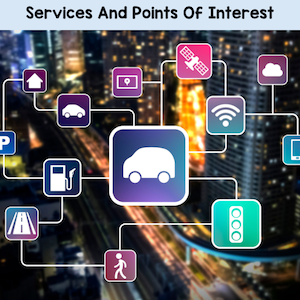
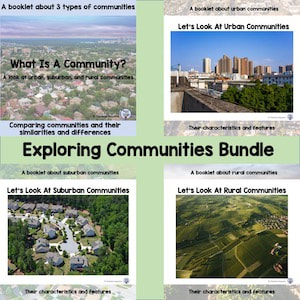



























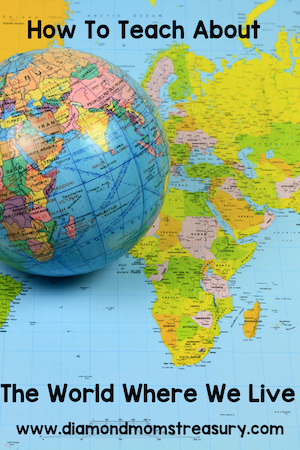













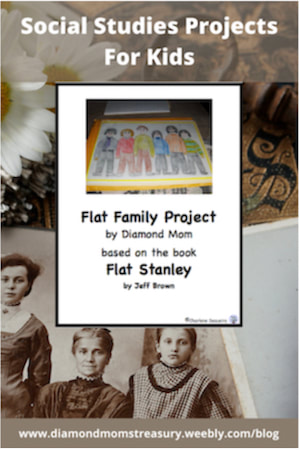















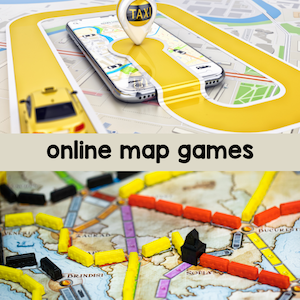



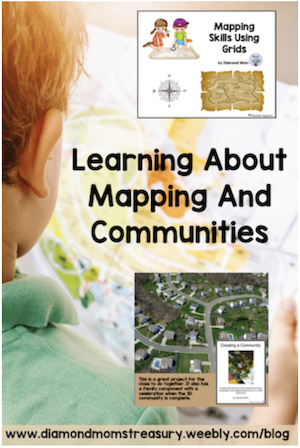






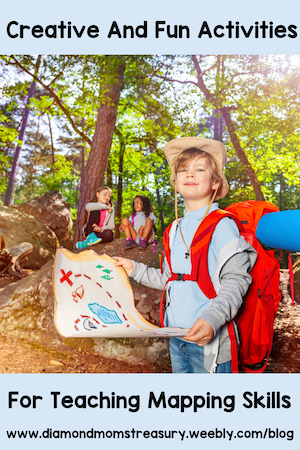

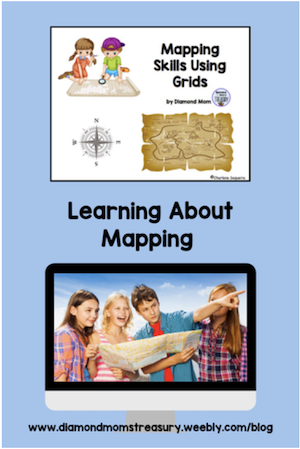


















 RSS Feed
RSS Feed